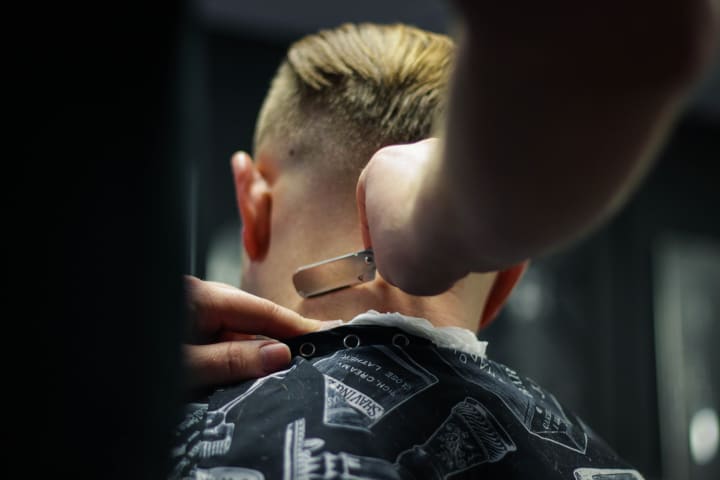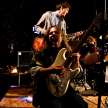10 Signs You Were in the Military
Here are some of the subtle but telltale signs you were in the military.

As a major military force in the world for many decades and a number of generations, the United States has many active soldiers and veterans who have served their country with honor and pride. Though some veterans are easy to identify, others are a bit stealthier. While many are proud to celebrate their service with hats, bumper stickers, fatigues, BDUs, or dress uniforms and other items that reference their time in the military, not all display their accomplishments overtly. However, there are certainly other, albeit subtle, indicators of someone's past or present military service. Like anyone, a careful study of these past and present military personnel can identify and reveal certain patterns of behavior that soldiers all share in common. These hints may not all be readily apparent at first, but a closer look will be a dead giveaway of the signs you were in the military.
Overall Demeanor and Manners
By and large, most active soldiers and veterans are typically very polite in light conversation and everyday interactions with others. This should come as little surprise, being that such respect and politeness are some of the core tenets meant to be instilled by military basic training. Soldiers are taught to afford respect and decorum to anyone they may interact with, not only their superiors or fellow servicemen and servicewomen. Listen for the use of words like sir or ma'am when in customer service situations. This may seem too general to determine anything from, though if you really pay close attention to most people's customer service interactions at the grocery store, bank, or other public places, it is rare to hear a civilian (on the customer side) use terms like sir or ma'am with any regularity.
Heightened Vigilance

Photo by Mean Shadows on Unsplash.
It goes without saying that vigilance is an important skill set encouraged and reinforced in the military. Without heightened awareness of ones surroundings, a soldier is at far greater danger of being attacked and wounded. Accordingly, soldiers are trained to heighten their perceptual skills to ready them for various combat scenarios. So crucial and emphatic is this aspect of training, that it doesn't really ever go away. You may find that a former or current service member seems on edge in certain social situations, keeping watch over all of their surroundings, regardless of how safe the setting may be. If you see a sturdily built, clean cut person scanning their eyes around a party, they may well be acting out habits that have stayed with them from their training. If they aren't involved in the military in anyway though, this trait is definitely one of the signs they would do well in the military.
The "Power Stance"
If there are certain indicative traits that will identify any veteran or serviceman, than it is even easier to spot officers (non-commissioned and otherwise). An officer will generally exude a certain level of confidence and leadership that has been ingrained in their character, whether by birth or by training. In addition to any identifying characteristics applying to all veterans and active duty personnel at large, officers have numerous ways, both conscious and unconscious, in which they communicate their positions of authority. Officers, both currently and formerly active, conduct their body language in an authoritative, assertive, and confident manner, whether meaning to or not. For example, officers may stand in what is called a "power stance," wherein they stand erect with their thumbs through their belt.
A Brisk Walking Pace

Photo by Wade Austin Ellis on Unsplash.
As previously stated, many aspects of military training that have been hammered home will become second nature to you and become an almost automatic body response. One such easily visible aspect is swiftness of pace. An active service member or veteran will often be seen walking at a much faster pace than the civilians around them. A soldier will typically carry the same sense of urgency and duty in all tasks of varying import. They will often walk at a very deliberate and swift pace, showing a great eagerness and or preparedness. Whether they are going to a meeting, catching a train, or grabbing the mail from the mailbox, a soldier will display the same momentum and energy that is asked of them in the service of their country.
Using Military Vocabulary
If you know anything about the military or have seen any war movies, you likely know that there is an entire vocabulary and set of alphabetic codes that are used in communication. Beyond the obvious negative for no and roger as an affirmative, there is some trade language that will identify the occupation of the speaker as one of the signs you were in the military to the outside world. Due largely to the lack of auditory clarity over radio communications, the letters of the alphabet are referred to with words beginning in those letters that are distinct enough from one another; Alpha, Bravo, Charlie, Delta, and so on. If someone says wtf as whiskey tango foxtrot, (or some better example that eludes me), or regularly breaks out into some of the most popular cadences at any occasion, they have likely spent some time in the armed forces.
Typically Capable of Sleeping Anywhere

Photo by Hamza Bounaim on Unsplash.
The military is no place for the weak of heart. Inherent in the training and day to day operations of the soldier is an instilled sense of survivalism and personal fortitude. Soldiers are trained to be rugged and resilient in the face of adversity of any kind, not allowing their surroundings to get the best of them. Because a soldier may likely not know where or when they will lay down their head next, it is crucial that they be able to do so under nearly any circumstances. If you are having a party or get together where you have more people crashing than beds available, a soldier will likely be the one to volunteer to sleep on the floor or the ground.
Wearing Sunglasses in Any Weather
It is no secret that veterans and active service members are quite fond of sunglasses. It is not uncommon to see service members wearing sunglasses at all times, even in civilian life. A soldier will wear their sunglasses in a thunderstorm with almost no sunlight breaking through the cloud cover. While many people of various occupations (mostly outdoor work) are often known to wear shades, this mode of identification will be easier if the person displays any of the previously noted traits. Additionally, while not exclusively, the sunglasses being worn are typically Oakleys or other wraparound style sunglasses because they stay on very easily and are relatively utilitarian in their construction. Anyone wearing any of these ballistic sunglasses on a Blues Brothers level of frequency likely has some military background.
Hair Style

Photo by Chris Knight on Unsplash.
All branches of the military require a very specific and strict set of grooming standards, especially in terms of one's hair. With stringent standards for hair length (no more than 3 inches long on the top), there are a number of distinct, but equally identifiable military haircuts that conform to the restrictions laid out by the regulations. The most readily identifiable military haircut, the high and tight, features shaved sides and closely cropped hair on the top of the head. In general, most of the military haircuts will be substantially shorter on the sides than the top, presumably to avoid ones hair becoming caught in anything. It is rare to see this haircut on anyone who is not associated with the military or with military aspirations.
Fast Eating
Like other items on this list, this indicator is largely experiential in origin. In a line of work where anything can happen at any time, soldiers are trained and expected to drop anything they are doing at a moment's notice to run headfirst into action. With the threat of danger always real and ever present on the front lines, mundane tasks like eating meals must be done with great haste and urgency, with little regard for their taste buds, treating food as fuel. Accordingly, soldiers learn to eat fast in case their meal is interrupted by the call of duty, so as not to go without needed sustenance. Service men, past and present, have often retained this habit due to repetition and compulsion. If you see someone with a high and tight inhaling their food, they may well have served for their country.
Style of Dress

Photo by Hoover Tung on Unsplash.
While not all servicemen and veterans wear items of clothing with their units on them or indicating the conflict that they served in, there are certain articles that they are often known to wear in civilian life that are often informed by their time in the service. One such item, quite ubiquitous to soldiers past and present, is cargo shorts. Like many items employed by soldiers, cargo shorts are function over form, utilitarian rather than stylish. With a great many pockets to carry equipment and personal items, cargo shorts naturally appeal to soldiers, who are used to lugging large amounts of stuff throughout the day. In fact, most cargo shorts have pretty similar pocket configurations to real military BDU pants, often available in olive greens and various camouflage prints. It's not necessarily the best indicator, but if you have more pockets on you than you do articles of clothing, this is one of the signs you were in the military.
About the Creator
Fred Eugene Park
Fred Park is a writer, singer and guitarist with a deep passion for music, sports and history. Fred graduated from Purchase College in 2016 with a BA in history.






Comments
There are no comments for this story
Be the first to respond and start the conversation.